Restoration
November 27, 2001
It’s been a fowl time Down East, as every bird known to man seems to be either wintering over or passing through – rafts of geese, loons, ducks, egrets, and cormorants are bobbing about Core Sound. Just when Cherokee thought she was safe from getting stripped and exposed, the crew have removed the sides of her pilot house. “Tom and Lee said they wanted to go for the open look,” joked Bryan. The purpose of this dismantling, which involved taping and removing the windows, lifting the side panels out, and passing them over the side, is to save labor by faring, fiberglassing, and painting on the flat.

A Fine View of Cherokee’s Forward Trunk Cabin
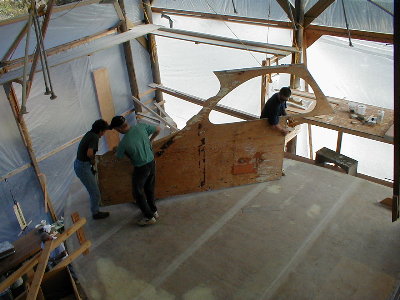
Jeanette, Tom, and Leonard Walking the Pilot House Wall
What wears panty hose over jeans, blue-tape suspenders with matching garter belt, and scary head gear? Not Bryan this time, but Stuart Wilde, painting the engine room! A true professional, he dons this practical albeit kinky outfit to prevent lint, stray
eye lashes, and skin cells from getting in the paint. After a careful priming from the whole crew, the engine room was turned over to Master Blasters Stuart and Bud, and is now at its shiniest and most pristine state ever.
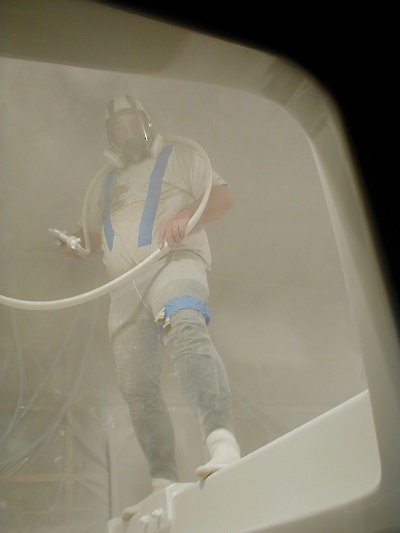
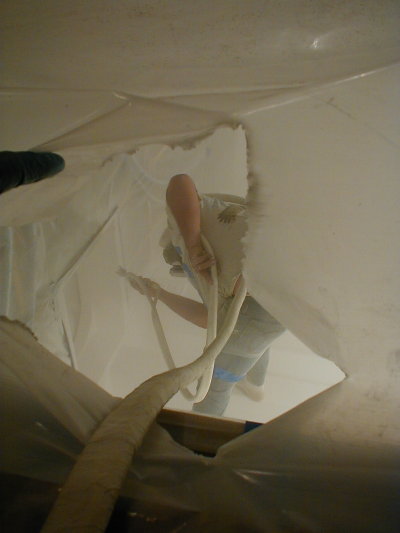
Engine Room Paint Process
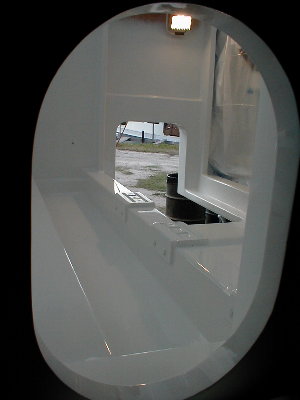
Portrait of Painted Engine Room
Tom and Bryan have been working on the aft cabin shower, as modeled below by Casey. Much thought went in to the placement of the shower seat, but after being tested by the tallest and shortest members of the crew, a good height was selected.
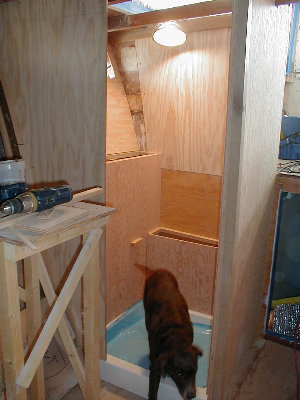

Shower and Seat Placement
Leonard and Bill Davis have been prepping the trunk cabin. This includes filling holes, glassing areas that have not been glassed, sanding and faring, and getting it ready for the painting process.
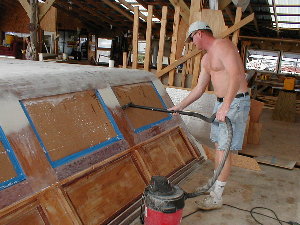
Leonard Vacuuming Sanding Dust from Trunk Cabin
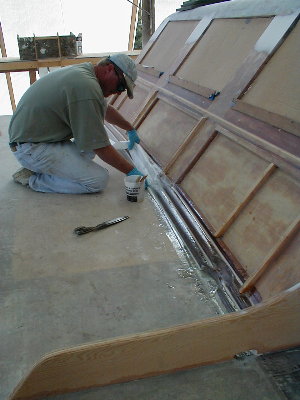

Forward Trunk Cabin Work
Norm has a habit of expressing his inner mad scientist, most recently with this new one-man band sanding invention. Below he puts it to use, the spring mechanism allowing him to fare the round corners with all pulls, no pushes.
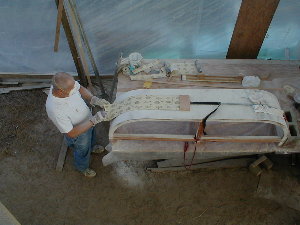
Norm and his One Man Stupendous Sanding Solution
Fish Doc paid a visit to Milton Styron the other day, who was mending nets at the water’s edge of Davis Shore. “Mr. Milton” is an old timey fisherman who remembers every weather event and fish run since before NOAA kept records. “It’s a miracle we’re still fishing,” he said. “A divine miracle!” He pointed down the shore at an uninhabited hammock called Davis Ridge. “Did you know freed slaves settled there and their kin lived there until the storm of ’33? It was a time on Davis Shore during that hurricane, but they got the worst of it – their houses filled with mud and water so they all up and moved to Beaufort.” According to David Cecelski in his new book The Waterman’s Song, Davis Ridge was settled by Sutton Davis, a former slave owned by Nathan Davis, a planter and shipbuilder on Davis Island. Sutton, rumored to be Nathan Davis’ son, bought four acres at Davis Ridge in 1865 and later 220 more. This Down East black community was made up of farmers, fishermen, whalers, boat builders, seafarers, and sharpie captains. Sutton built the Shamrock and the Mary E. Reeves, menhaden schooners worked by his sons and loaded with fish that was processed into meal and oil by his daughters. It’s amazing how a windswept piece of marsh and mud can hold so much history and greatness. Signing off for now, Barbara “Fish Doctor” Blake











